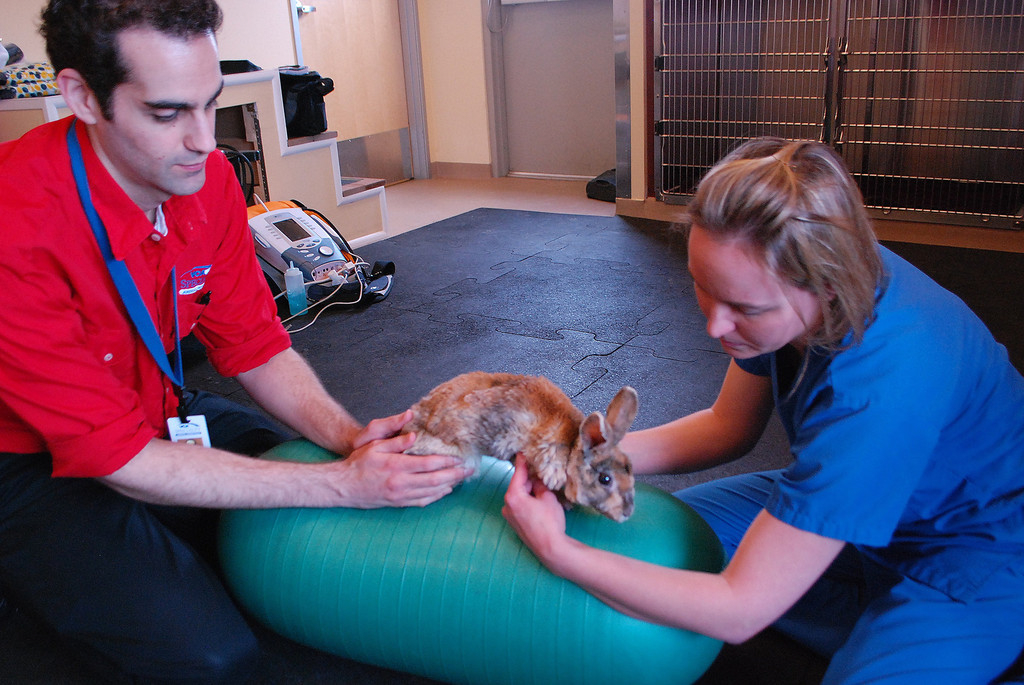Physical therapy isn’t just for people. Animals also sometimes need help strengthening muscles or regaining their ability to walk, run or climb stairs after surgery or an injury. And as animals get older, they may find it hard to move easily. Physical therapy helps improve their quality of life.
About 12 years ago, some physical therapy specialists realized that many of the same techniques and equipment used to help humans could benefit animals — especially dogs. Since then, a new career field, called canine rehabilitation, has blossomed.
Canine rehabilitation focuses on improving a dog’s ability to move while reducing pain and the need for medicine.
There are many ways to do this. For example, walking in sand and mulch pits can help a dog learn how to move about on shifting surfaces or uneven ground. Exercise balls help with balance; braces help with torn ligaments; treadmills help build leg strength. In swimming pools, water allows a dog to move many muscles at once without having to put weight on its joints. Obstacle courses help improve an animal’s ability to go over and under things.
Animal physical therapists don’t always use specialized equipment. They know that their most important tool is their hands: Massages improve blood circulation, and moving the pet’s affected joints increases flexibility.
Let’s meet some patients at VCA Veterinary Referral Associates in Gaithersburg, Md.
Gus, a 9-year-old boxer, is recovering from knee surgery. Several times a week, he performs physical therapy using an underwater treadmill. Unlike regular treadmills, this one uses water to help support Gus’s body as he runs. The water level starts at his hips and is lowered as his legs get stronger and can carry more of his own weight. Gus is likely to have four to eight weeks of therapy.
Roxy, a 12-year-old German shepherd, has arthritis in her spine. Stepping over raised bars, walking around cones and doing stair-step stretches may improve her strength and mobility so she won’t need to have an operation.
Dempsey, another 9-year-old boxer, has nerve damage to his hind legs. He can’t stand on his own and drags his back legs as he moves around. His family often helps him get around by carrying him in an underbelly sling with a handle on top. But Dempsey is heavy. When he’s outside, Dempsey uses a wheeled cart made specially for him so he can romp. He’s one happy dog as he accompanies his human family on a jog through the park.
Renee Mills, who does pet therapy and runs the rehabilitation program at the Gaithersburg facility, suggests that if you are interested in learning more about a career in physical therapy for pets, you should talk to local veterinarians, volunteer at an animal shelter and take science courses in school.
Mills loves coming to work each day. Beyond working with dogs, she has helped cats and rabbits. She even performed laser therapy on a hedgehog. There’s always a new challenge.
“We really get to make a difference in a pet’s quality of life,” she said.



